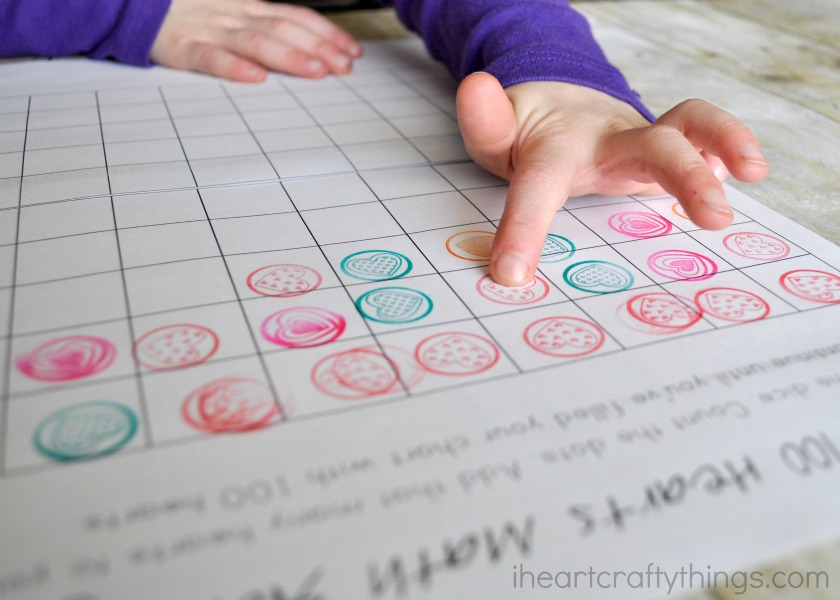In the last ten years, in our country, a great emphasis has been placed on mathematics education . We have the feeling that our children are lagging behind many children from other countries in the Western and Eastern Hemisphere. As a consequence, the teaching of mathematics in early childhood education has become a priority in our educational system. In fact, different research studies show that learning mathematics in preschool strongly predicts later mathematical learning and other types of learning. This is why there is a growing push towards a strong and coherent mathematics curriculum in early childhood education.
THE TEACHING OF MATHEMATICS IN PRESCHOOL
Unfortunately, those who insist on improving mathematics teaching in preschool are often politicians, school principals, parents, or primary school teachers with minimal experience working with preschoolers and little first-hand knowledge of how these children learn. . Some have a lot of experience and knowledge in education, and others are experts in teaching mathematics in elementary, middle or even high school, but very few have actually been teaching how to learn mathematics in preschool.
Class for preschool children
A review of many mathematics textbooks for young children shows that, for the most part, the ideas and techniques preached for preschoolers are very similar to those used with first, second, or even third graders. grade.
Three-, four-, and five-year-olds don’t function or think the same way as seven, eight, or nine-year-olds. We cannot use the same techniques or pretend that early childhood education is only third grade with a simpler curriculum. Preschool children have their own needs and ways of learning , and if we want them to get the most out of math, we need to address these specificities.
HOW DO INFANT EDUCATION CHILDREN LEARN?
Early childhood children learn all the time. They do not wait for our lessons to start acquiring knowledge. They observe, think, develop hypotheses, test their hypotheses, and come up with their own ideas about how things work, that is, they develop their own mini-theories, many times during a normal day.
Therefore, one of the most important roles of the teacher is not to interrupt this process, but to enrich it so that children can learn even more. Therefore, teachers have to dedicate time and effort to the improvement, creation and support of informal learning opportunities.
In addition, we can support children ‘s independent exploration of mathematical concepts by dedicating an area of the classroom to these types of activities. An area called “mathematics center” or “mathematics corner” where children will find all kinds of materials that stimulate their curiosity and help them learn mathematics in preschool and acquire different mathematical concepts, while using them, manipulating them and playing with them. them independently. We can enrich this area by continually providing new materials.
LEARNING METHOD
Even so, we cannot leave the fact of learning mathematics in preschool to informal experiences. Our obligation is to develop a coherent and systematic curriculum that ensures that students learn what they are capable of learning.
Of course, our planning will have to be adapted to children’s current knowledge , developmental learning needs and individuality of each child. Now, it’s not enough that math lessons are developmentally appropriate; they must be meaningful and exciting . Through daily practice and research, I have come to the conclusion that there are six main activities that children find exciting:
Play games
Listen and act out stories
Participate in adventures and mysteries
Sing, play instruments and dance to music
Engage in creative and artistic expression
Explore natural and real-life phenomena
Nens fent treballs manuals a l’aula
Therefore, I propose a method for learning mathematics in preschool based on these six types of activities. This method is quite different from the traditional way of developing the curriculum proposed by most mathematics teaching textbooks.
As I have explained before, many of these books have been written with primary school children in mind and extending the same methods to younger children.
Even many experts who use constructivist principles seem to forget the idea that the brain only pays attention and makes an effort to learn those things that it thinks are worth learning . Since most experts tend to forget this principle, they often prepare curriculum ideas that target the rational part of the brain, neglecting the emotional part .
They will tell you that you give children a cognitive challenge and that you let them explore and learn from their own actions . This is fantastic. In fact, it is much better than the old way of teaching by explaining the lesson, asking the children to memorize the information and to recall this information later in some type of quiz or exam.
Yet even these constructivist pundits forget that the brain has a mechanism that, after being presented with a new piece of information, situation, object, or challenge, assesses its interest.
If the answer is “there is no good reason” or “because my teacher wants me to”, the learning experience will be a failure.
HOW TO AWAKEN THE BRAIN
Children can do what is required of them, but most of their brain is somewhere else or in hibernation waiting for a good reason to wake up.
The method I propose addresses how to wake up the brain and engage it in the effort to learn something new. Children’s brains get excited about specific things and not What does it matter if a spider has six, seven or eight legs?
Even so, if you ask the child if he wants to know if the spider is dangerous, what to do if the spider bites you or how to know if the bite is poisonous, the child will be immediately interested because all this knowledge is relevant to their lives and has a immediate practical use.

